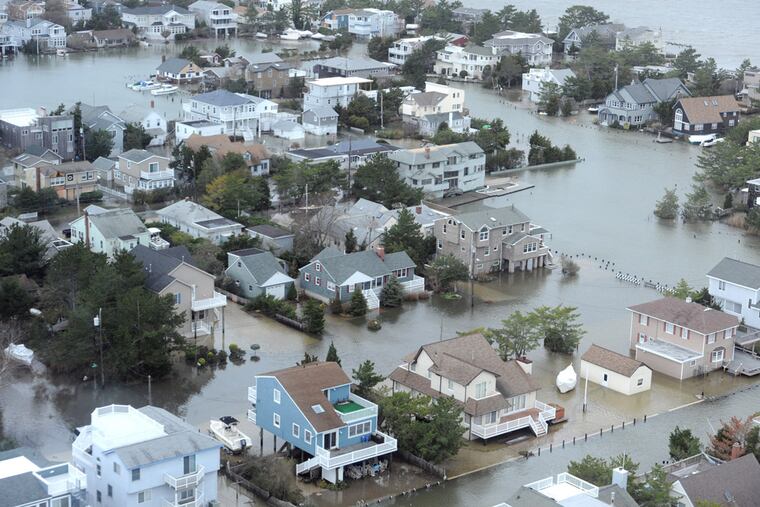On a deadly October storm anniversary in Philly, forecasters warn the hurricane season is far from over
Late-season storms, such as Hazel, blamed for killing 15 in the Philly area on this date in 1954, are not that unusual. With warm waters, they may lap into November this year.

It was more than a month after what historically has been the peak of the hurricane season, and by the time it roared into Canada at turnpike speeds, what was left of Hurricane Hazel was blamed for 15 deaths and scores of injuries in the Philadelphia region.
On Oct. 15, 1954, it generated what is still the strongest gust ever observed at Philadelphia International Airport — 94 mph — and tropical-storm force winds for six consecutive hours, resulting in what at the time was a record number of power outages for Peco’s service territory.
That record eventually would be eclipsed, and then some, by Sandy in 2012.
Yes, that was another October storm.
In fact, historically more than a quarter of all named storms, those with winds of at least 39 mph, have formed after Oct. 1.
Two more seedlings could become the 13th and 14th named storms of this season in the next several days, said Alex DaSilva, a hurricane specialist with AccuWeather Inc., given that sea-surface temperatures in the Atlantic Basin, which includes the Gulf of Mexico and the Caribbean Sea, remain well above normal.
Warm waters are the lifeblood of hurricanes, and DaSilva said it’s possible that some storms could pop in November. Technically the season, which begins June 1, ends on Nov. 30. But on average only one named storm occurs in November, and no hurricanes.
Noting the temperatures in the especially hurricane-friendly Caribbean, Colorado State University hurricane researcher Philip Klotzbach said, “I can’t imagine this ends well.”
About Hurricane Hazel
After ripping apart portions of the Caribbean, Hazel crashed ashore near the Carolinas’ border with peak winds of 125 mph.
On its inland journey, it interacted with upper-air winds and sped north at speeds up to 60 mph, according to the U.S. Weather Bureau’s Monthly Review.
In the meteorological terminology, it became “post tropical,” but a dangerous storm by any other name.
“I know that a lot of people think that when a storm becomes post-tropical that means its impacts are less,” Klotzbach said, but storms have had devastating impacts after they stop drawing their energy from warm ocean waters. Ida, in 2021, and Floyd, in 1999, for example, caused catastrophic flooding in the Philly region.
The eye of Hurricane Hazel tracked about 100 miles west of Philadelphia, putting the region on the dangerous east side of the storm circulation.
It was especially impactful around here given that the worst of it hit midafternoon on a Friday, and the winds howled into the night.
Growing up in Philly, Jim Eberwine, a retired National Weather Service forecaster who is now the emergency manager in Absecon, has vivid memories of Hazel. “My streets in Brewerytown were so narrow that the wind was whipping through and you could see the cars shaking,” he said.
In all, over 1,000 deaths were attributed to Hazel, 15 of those in the immediate Philadelphia area, believed to be the most locally for any tropical-related storm.
What’s ahead in the 2024 hurricane season
Destructive Hurricane Milton, which struck while people in Florida were trying the recover from Helene, was the 13th named storm of the season.
If the alphabetical list gets to “Oscar,” which would be No. 15, the season would rank above the average for named storms, which is 14.
The National Hurricane Center said Tuesday that a disturbance still hundreds of miles from the Caribbean has a 60% chance of becoming a tropical system, and another one in the far western Caribbean has a 30% chance.
For now, neither appears likely to affect the U.S. mainland, said AccuWeather’s DaSilva, but, obviously, it would be way to early to know for certain.
Millions of people will be rooting hard against them.